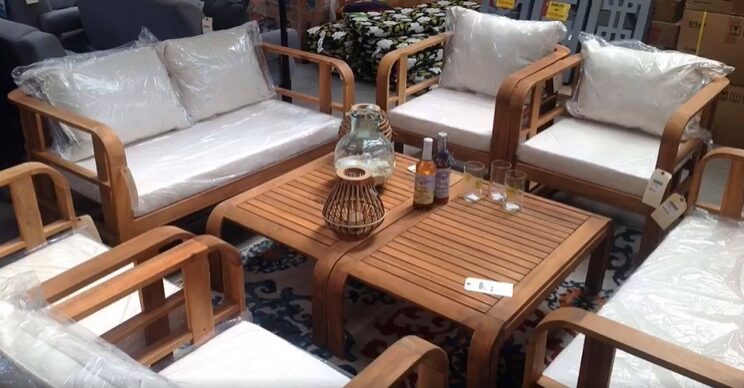Discovering the Timeless Allure of Acacia Wood Furniture
Acacia Wood furniture has an enduring charm, and within the realm of timeless timber, acacia wood stands out. Coveted for centuries due to its beauty and durability, acacia wood has become a staple in interior design.
Understanding Acacia Wood
Acacia wood, also known as wattle, originates from acacia trees and shrubs in the Acacia genus, with over 1,350 species, predominantly found in Australia. Recognized for its robust and stunning appearance, acacia remains a top choice for high-quality, long-lasting furniture pieces.
The Acacia Tree: A Global Presence
The acacia tree, also called mimosa, wattle, or thorn tree, boasts over 1,350 varieties worldwide. A graceful sub-tropical hardwood native to Australia, it has made its way to continents like Africa, Europe, Asia, and North and South America. Its wood serves various purposes, from staple furniture to countertops, flooring, and decorative items.
Properties and Characteristics: Pros and Cons
Pros of Acacia Wood
- Water-Resistant: With natural water resistance, acacia furniture can withstand regular moisture contact without special treatment.
- Antimicrobial: Acacia possesses natural antimicrobial properties, ensuring a hygienic environment.
- Smooth, Dense, and Scratch-Resistant: Acacia’s smooth texture and density make it resistant to scratches, ensuring longevity.
- Stain Retention: It holds stains well, offering flexibility in achieving desired aesthetics.
Cons of Acacia Wood
- High Price Tag: The quality comes at a cost, as acacia wood furniture tends to be pricier.
- High Maintenance: Despite durability, regular care is essential to prevent discoloration and warping.
- Irregular Color and Grain Patterns: The unique grain patterns may not appeal to those seeking a homogeneous look.
- Sensitive to Temperature Fluctuations: Acacia furniture may be affected by constant temperature changes.
Durability and Hardness: A Royal Endorsement
Acacia’s durability is exemplified by its historical use as the primary building material for the British Royal Navy’s celebrated ships in the 18th century. Its hardness surpasses popular wood choices like oak, hickory, and bamboo, offering resistance to scratching and ensuring long-lasting use.
Practicality and Maintenance: A Wise Choice for Indoors
Acacia wood furniture, particularly suitable for indoor use, requires simple maintenance. Regular washing with warm, soapy water and avoiding harsh cleaners or treatments containing silicone ensures the preservation of its rich, natural tones. While durable, acacia may warp if exposed to constant moisture or temperature fluctuations.
Sustainability: A Green Choice
Acacia wood is a sustainable option, growing abundantly worldwide without the need for excessive fertilizers or pesticides. Opting for FSC-certified acacia furniture ensures adherence to strict standards set by the Forest Stewardship Council, promoting responsible forest management.
Value for Money: Justifying the Investment
While acacia’s price may surpass that of traditional hardwoods like maple and oak, the durability and longevity of acacia pieces justify the cost. It has maintained its beauty for decades, standing up to outdoor elements that might damage less expensive wood varieties.
Acacia Furniture: An Outdoor Alternative
Acacia wood serves as a compelling alternative to teak for outdoor furniture. While less expensive than teak, acacia boasts higher Janka hardness scores. However, it requires protective treatment due to lower oil content.
Maintaining Acacia Wood: Simplicity is Key
Keeping acacia wood furniture in top condition is straightforward. Regular cleaning with water and a gentle soap-soaked rag, along with periodic sealing and oiling, ensures durability and a fresh appearance.







